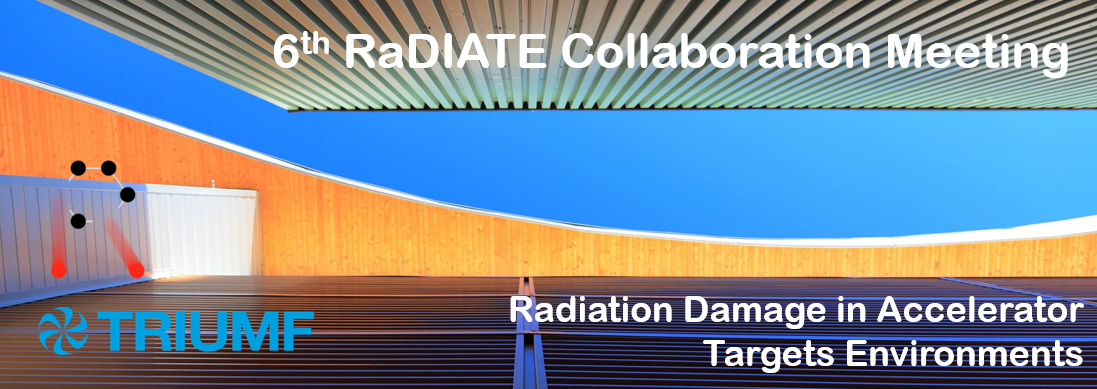Speaker
Taku Ishida
(J-PARC)
Description
An optical transmission radiation (OTR) foil as beam monitor, which is Ti-15V-3Cr-3Al-3Sn alloy with 0.05 mm in thickness, used in the J-PARC neutrino facility was examined for the irradiation damage analysis in the Pacific Northwest National Laboratory under the RaDIATE collaboration. The foil was irradiated by 30 GeV proton beam with 1.4x10^20 POT. The foil microstructures of β-phase Ti-15-3-3-3 alloy had very high densities of nano size clusters of omega phase and α’’ phases before the irradiation, and these phases were relatively stable after the irradiation. It was also found to be very low density of defect clusters formed by irradiation about 0.06 dpa. The result can suggest that Ti-15-3-3-3 alloy may have a high resistance for radiation damage.
The correlations of radiation hardening measurement method from cm-scale to nano-scale can be given by tensile tests, Vickers hardness, and nano-indentation tests. From the data of tensile test and Vickers hardness test, it can be evaluated to be σy≒3 Hv, and from Vickers hardness test and nano-hardness test, it can be evaluated to be Hv≒60×Hm. Low energy ion irradiations such as HIT (High Fluence Irradiation Facility of The University of Tokyo) ion experiments are very useful in the evaluation of high DPA irradiation hardening behavior. The main objectives of this study in the HIT ion beam experiments are (1) to support for the evaluation and analysis of radiation damage induced by high energy proton irradiations, (2) to obtain the estimation of irradiation hardening behaviors in high DPA and DPA dependency of the materials, and (3) to evaluate the materials selection for higher radiation damage resistance.
In the tandetron accelerator of HIT facility in the University of Tokyo, Fe^2+ ions with an energy of 2.8 MeV were irradiated to specimens under a displacement damage rate of about 8.4x10^-4 dpa/sec to 1 dpa, 5 dpa, and 10 dpa. The specimens of Ti-15-3-3-3 (metastable β-alloy, solution treatment, not aged (ST)), Ti-15-3-3-3 (metastable β-alloy, solution treatment and aged (STA)), Ti-6V-4Al with α+β phases annealed (A), Ti-64 with α+β phases heat-treated with STA (WQ+Aging), and TFGR (Toughened Fine-Grained Recrystallized) tungsten were used for the experiments. After the irradiation, the nano hardness was examined by Shimazu- DUH-211S type nano indentation testing.
As preliminary results, nano-hardness data of Ti-64 A, Ti-15-3-3-3 ST, and Ti-15-3-3-3 STA irradiated to 10 dpa at RT were obtained. The radiation hardening of these Ti-15-3-3-3 alloys were smaller than Ti-64 alloy. Especially, Ti-15-3-3-3 ST was hardly increased by the irradiation. DPA nano-hardness dependence from 1 to 10 dpa will be measured, and the correlation between the BLIP data and the HIT data is under examining. Further experiments and these data analysis of HIT experiments will be performed in 2020.
Primary author
Dr
Eiichi Wakai
(J-PARC, Japan Atomic Energy Agency)
Co-authors
Prof.
Hiroaki Abe
(University of Tokyo)
Dr
Sho Kano
(University of Tokyo)
Mr
Shunsuke Makimura
(KEK, J-PARC)
Taku Ishida
(J-PARC)

